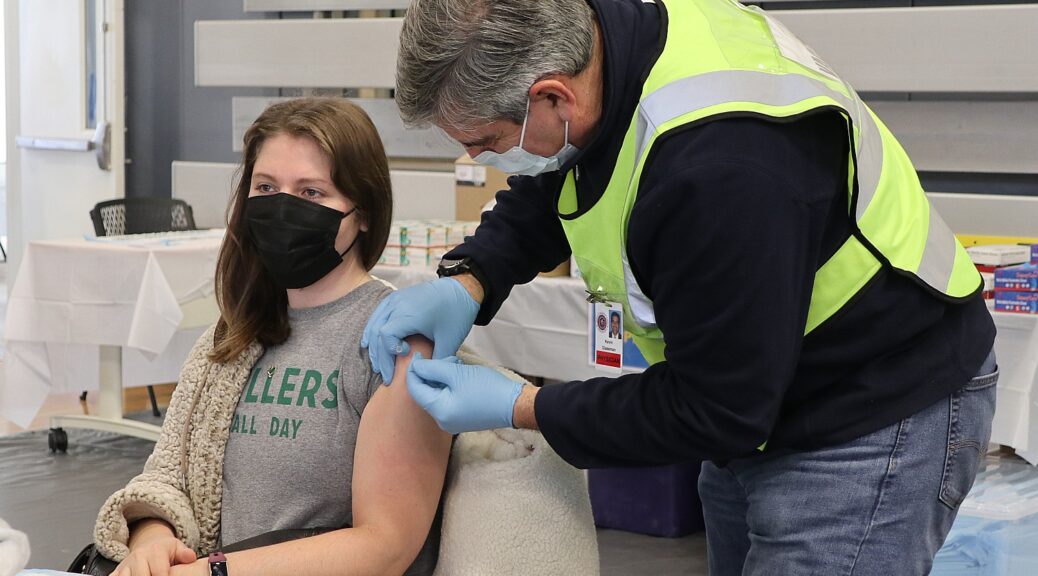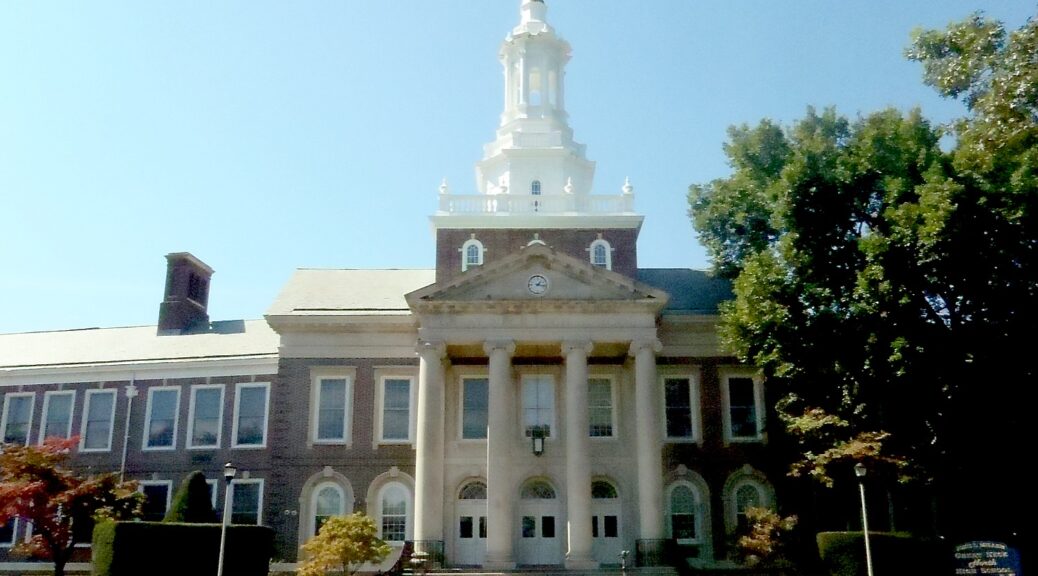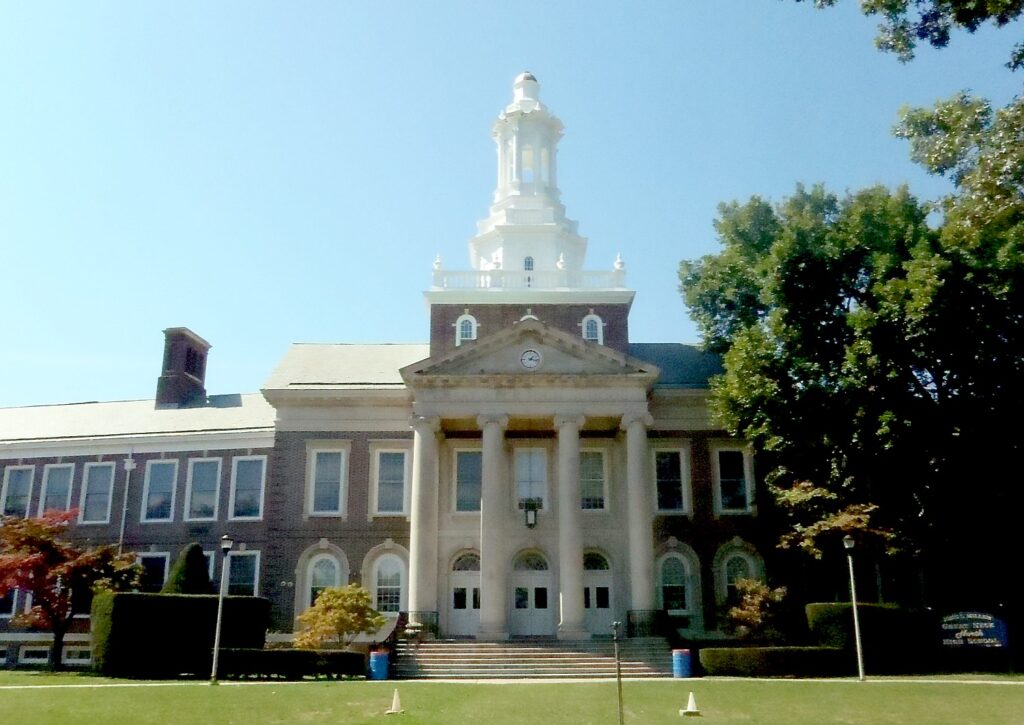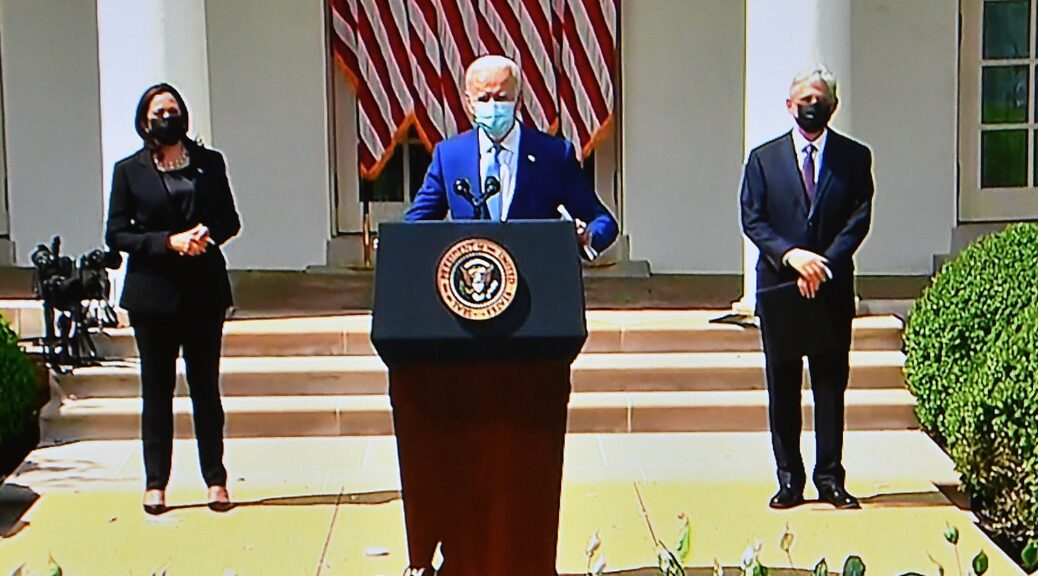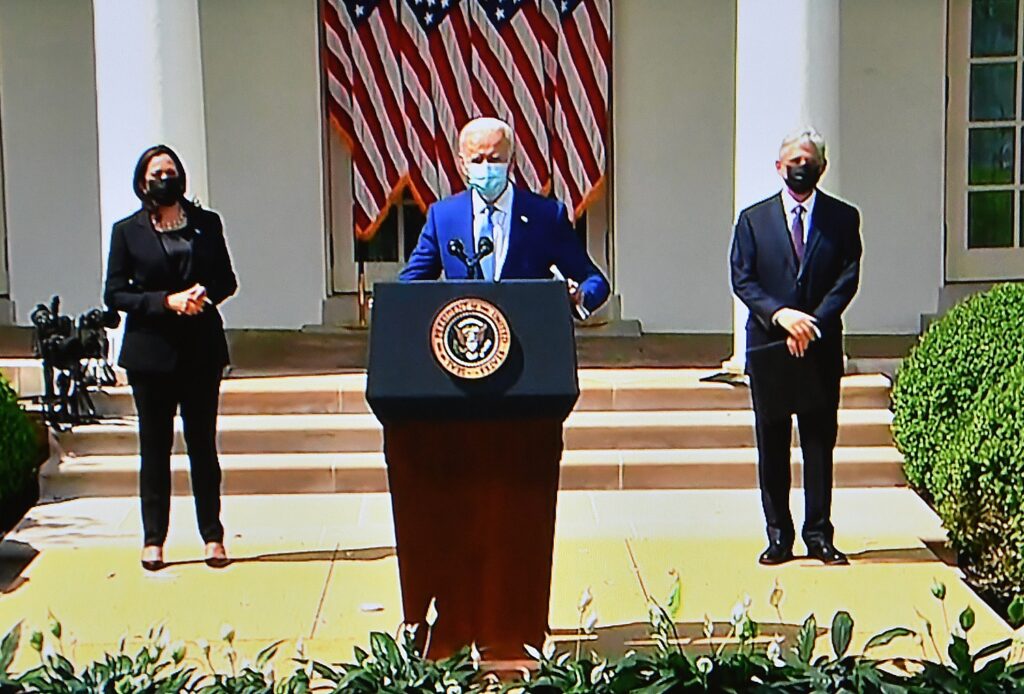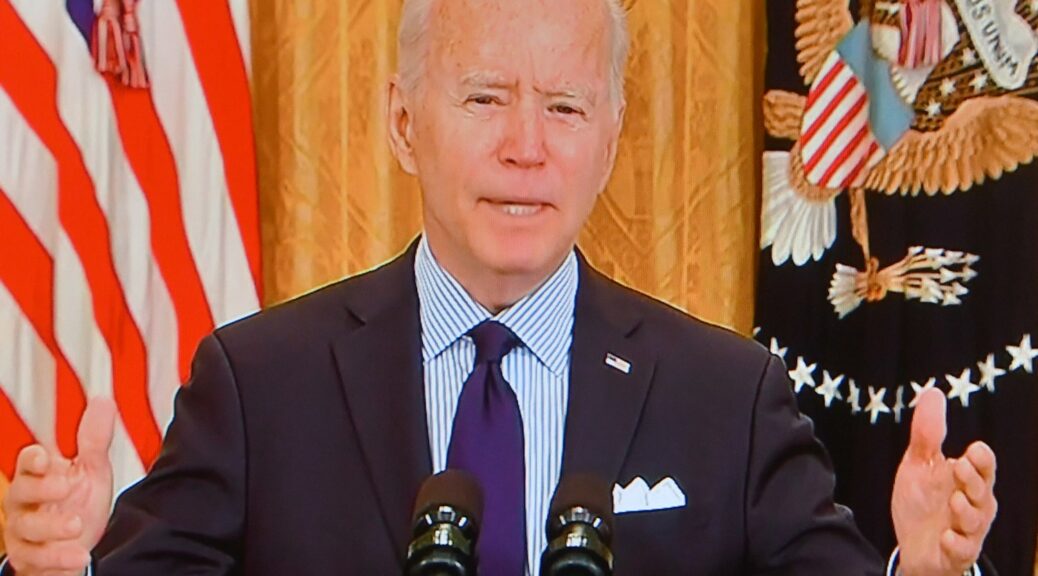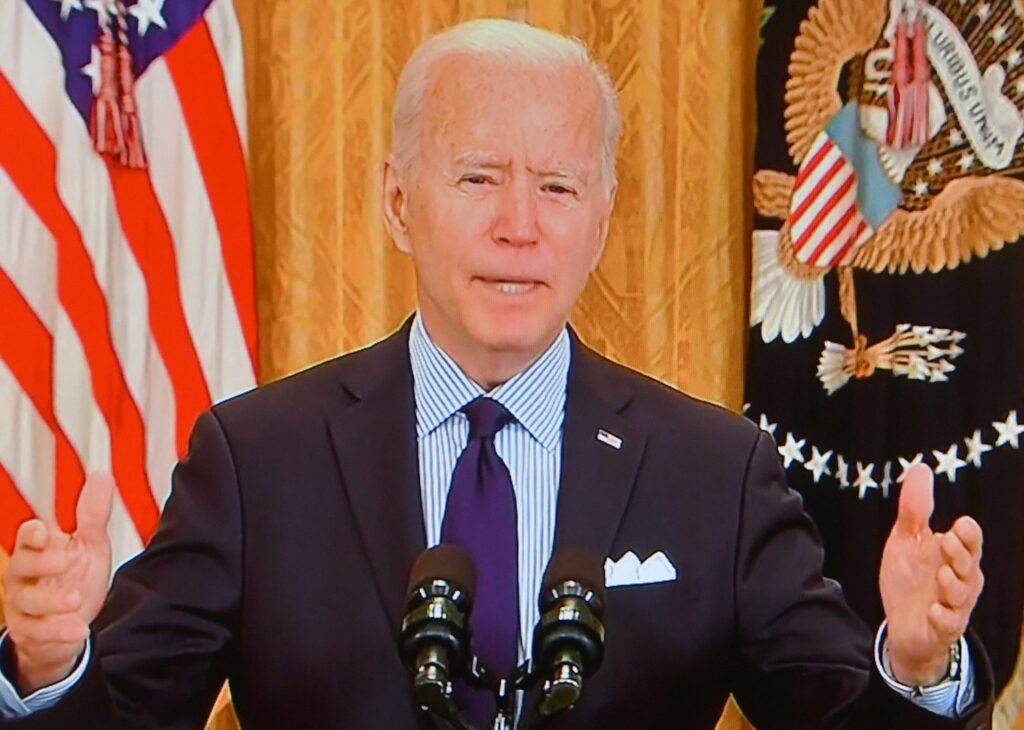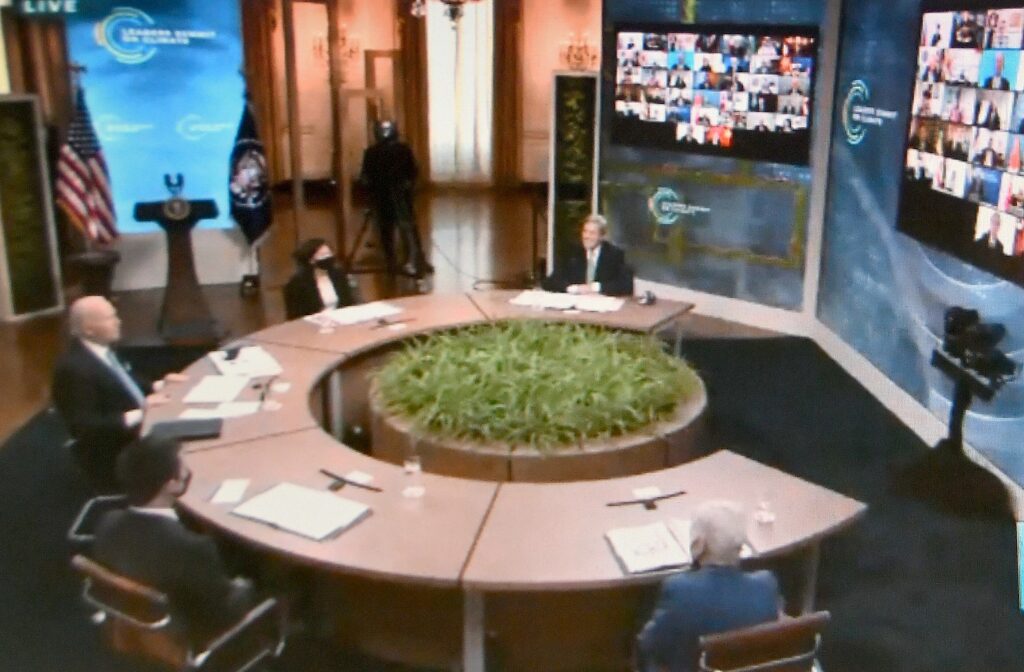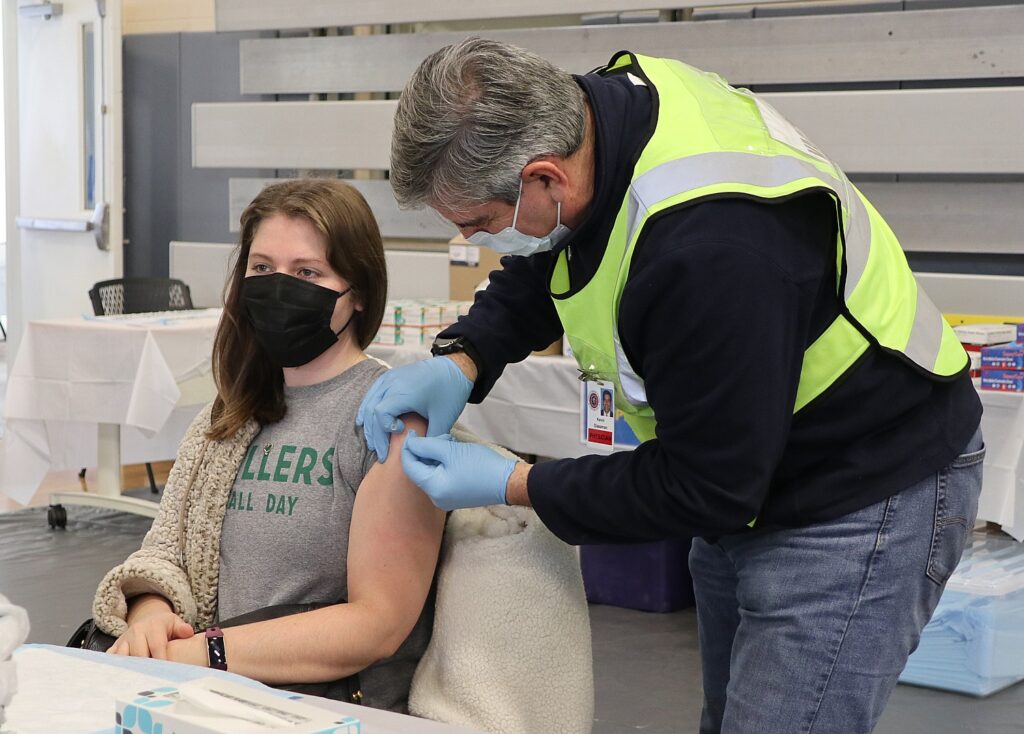
In a White House press call, September 3, 2021, Biden Administration officials laid out plans and strategy for pandemic preparedness to counter the COVID-19 pandemic still impacting the nation and the world, and to prepare for inevitable future pandemics.
The administration is seeking$65.3 billion over 7 to 10 years to institute the full set of capabilities needed to transform our ability to be prepared for any family of virus.
“President Biden is committed to combatting the ongoing COVID-19 pandemic and Building Back Better for the next biological threat. As part of this responsibility, the United States must lean forward and catalyze the advances in science, technology, and core capabilities required to protect the Nation against future and potentially catastrophic biological threats, whether naturally-occurring, accidental, or deliberate. “
Here are the remarks, and a fact sheet detailing the Biden Administration’s plan:
Office of Science and Technology Policy Director Dr. Eric Lander stated:
The COVID-19 pandemic arrived at a time when science and technology capabilities were changing very rapidly. Recent scientific advances made it possible to respond much more rapidly than ever before. Had COVID-19 emerged five years ago, we would have had far fewer tools to do this.
But, five years from now, we need to have much better capabilities. We need to have better capabilities because, well, even with the knowledge and the tools that dramatically improved our ability to respond, COVID-19 has still been devastating for the nation and the world.
As of today, COVID-19 has killed at least 642,000 Americans and many, many millions of people around the world, and many recovered patients are living with long-term effects of the disease.
It’s also caused economic damage to the United States that’s been estimated in the range of $16 trillion in lost economic output, direct spending, mortality, and morbidity. And the societal impact has been borne disproportionately by frontline and vulnerable populations, especially people of color.
We need better capabilities also because there is a reasonable likelihood that another serious pandemic that could be worse than COVID-19 will occur soon, possibly even within the next decade. And the next pandemic will very likely be substantially different than COVID-19. So, we must be prepared to deal with any type of viral threat.
Now, because of ongoing progress in science and technology and innovation, we can have better capabilities for medicine, for situational awareness, for public health, and for lots more. For the first time in the nation’s history, we have the opportunity, due to these kinds of advances in science and technology, not just to refill stockpiles, but transform our capabilities. But we really need to start preparing now.
We’ve got to seize the unique opportunity to transform our scientific capabilities so we’re prepared for the increasing frequency of biological threats on the horizon. Investing to avert or mitigate the huge toll of future pandemics or other biological threats is both an economic and moral imperative.
So, five years from now, we need to be in a far stronger position to stop infectious diseases before they become global pandemics like COVID-19.
Now, there’s a lot we can do to transform our scientific capabilities for vaccine, therapeutic, diagnostic development; for early warning; for public health systems.
Importantly, these kinds of advances will not only strengthen our systems for dealing with future biological threats, they will be valuable for everyday public health and medical care for all Americans and for the world. This will help everyday public health for everyone.
Now, all these efforts, I’ve got to say, must, from the very outset, include a strong emphasis on reducing inequities and increasing access for all Americans to the resulting advances, because as we’ve seen from this pandemic, having the burden largely borne by vulnerable populations is unacceptable.
The COVID-19 pandemic has exposed fundamental issues with America’s public heath that go far beyond pandemic preparedness.
The issues include the need to increase overall public health funding, strengthen the public health workforce, eliminate barriers to access, improve data systems, address disparities, improve communications, and improve coordination across federal, state, local, and Tribal authorities.
The plan that’s being released today addresses needs directly related to pandemic preparedness, but I just want to emphasize there are broader public health issues that’ll need to be addressed separately and in a coordinated fashion.
So, today, the White House is releasing a document entitled “American Pandemic Preparedness: Transforming our Capabilities,” and the document describes goals under five pillars to protect the U.S. against biological threats.
Pillar number one is: transforming our medical defenses, including improving vaccine, therapeutics, and diagnostics.
Pillar number two: ensuring situational awareness about infectious disease threats, for both early warning and real-time monitoring.
Pillar three: strengthening public health systems, both in the U.S. and internationally, to be able to respond to emergencies, with a particular focus on protecting the most vulnerable communities.
Pillar four: building core capabilities, including personal protective equipment, stockpiles and supply chains, biosafety and biosecurity, and regulatory improvement.
And pillar five: managing the mission, with the seriousness of purpose, commitment, and accountability of an Apollo Program.
So, while the government — the U.S. government has made and must continue to make investments in basic science research, this plan includes the full set of capabilities needed to transform our ability to be prepared for any family of virus. The cost is $65.3 billion over 7 to 10 years.
And it’s vital that we start with an initial outlay of $15- to $20 billion to jumpstart these efforts. And, accordingly, we’re proposing that the current budget reconciliation provides at least $15 billion towards this goal.
The administration will work through other appropriations to support the remainder of that $65.3 billion budget, above baseline, needed to execute the plan in full.
And over the coming months, the White House will be developing the President’s budget, which will provide resources to ensure that the United States is prepared for the next pandemic.
So, let me just say, these critical investments will build on and complement the broader U.S. government biomedical and health research portfolio.
We strongly believe that this mission is so important that it needs to be managed with the seriousness of purpose, commitment, and accountability of, well, President Kennedy’s Apollo Program, overseen by a dedicated program office.
So we’re proposing there be a centralized “Mission Control” acting as a single, unified program management unit that draws on expertise from multiple agencies at HHS, including NIH, CDC, BARDA, FDA, and CMS, as well as other agencies and departments such as DOD, DOE, VA. You know, for example, the Countermeasures Acceleration Group — formerly “Operation Warp Speed” — is led by a single joint program management unit.
And Mission Control should have the responsibility and the authority to develop and update plans with objective and transparent milestones; regularly assess and publicly report on mission progress; shift funding to ensure that goals are achieved; coordinate linkages across performers in government — academia, philanthropy, and industry; and conduct periodic exercises to evaluate our actual national pandemic preparedness by deploying these capabilities, including through testing rapid product development. And it should seek input of outside experts and have working groups that allow it to get the best possible advice.
So, like any ambitious endeavor — whether it’s going to the Moon with the Apollo mission or cracking the human DNA with the Human Genome Project — an effort like this will take serious, sustained commitment and accountability.
And like those kinds of efforts, it is likely to yield benefits far beyond the initial mission — in this case, advances in human health and providing tools that can help overcome health inequities and ensure equitable access to innovative products for all Americans.
So, we at the Office of Science and Technology have been working hard on the plan in very close partnership with the National Security Council, and particularly the National Security Advisor, Jake Sullivan.
NSC Director for Global Health Security and Biodefense Dr. Beth Cameron on American Pandemic Preparedness stated:
The President has been committed from day one to pandemic readiness, including ending this pandemic which threatens the world and continues to create dangerous variants.
In parallel, he and the administration remain committed to advancing, repairing, and strengthening health security and pandemic preparedness for the future, including obviously here in the United States but also around the world.
And that’s why the President took swift action early to lay out a vision and plans for this work, including signing his first National Security Memorandum, which focused on the COVID-19 health and humanitarian response; advancing health security; and building better biological preparedness. And this plan is really one central piece of that effort.
We’re also actively implementing many of the actions called for in NSM-1, including, obviously, releasing a COVID-19 response strategy, both domestically and globally. We’ve established a new domestic Center for Epidemic Forecasting and Outbreak Analytics. We’ve reengaged with the WHO on day one. We’re working across the government to raise the global and domestic research and development ambition to decrease the timing between detection of the new biological threat and safe delivery of targeted countermeasures and therapeutics. And you obviously heard a lot more about that from Dr. Lander.
We’re reviewing the existing state of our biodefense enterprise — and I’ll come back to that in a second — and we continue to prioritize helping other countries in need to build their capacities to prevent, detect, and respond, and to advance our programs that support the global health security agenda and establish catalytic health security financing for the future.
The President signed, on his first day in office, Executive Order 13987, and that focused on the organization here in the United States for COVID-19, but also on emerging biological threats. And it included reestablishing my office — the Directorate for Global Health Security and Biodefense on the NSC staff.
And we’re really here to provide a high-level “belly button,” if you will, to elevate these important issues to the President and the NSC.
Our team has a “no-fail” mission to rapidly mobilize the policy machinery to elevate high-consequence infectious disease outbreaks quickly across the White House and to the National Security Advisor, and really to empower agencies to adopt a no-regrets response.
And we’re working very closely with OSTP and across the White House with all relevant departments and agencies as well to do a whole-of-government review and update of national bio-preparedness policies, which is directed by that executive order and by National Security Memorandum-1.
And so the document that we’re releasing today that Eric outlined in detail lays out a set of urgent needs and opportunities that are necessary to protect the United States against biological and pandemic threats.
We believe that transforming our capabilities will require a systematic effort and a shared vision for biological preparedness that, as you heard from Eric, is really akin to an Apollo mission.
And that’s why we envision that this will be a core element of our strategy going forward on biodefense and pandemic readiness, informed by lessons from the COVID-19 pandemic.
Importantly, though, we continue to take stock of our full range of biodefense, pandemic readiness, and global health security needs, including capabilities, policies, and practices that we need to update and refresh, building on our lessons from COVID-19 and other outbreaks.
While this plan does lay out a clear vision for bio-preparedness, it doesn’t cover everything. As Dr. Lander said, it’s really focused on our capabilities at home to prepare for pandemic.
COVID-19 has enumerated a number of challenges in our preparedness for a moderate pandemic, but we do need additional capabilities to be fully prepared for any biological event that comes our way, and that includes countering bioterrorism; countering the development and use of biological weapons; strengthening the Biological Weapons Convention; improving food security and food defense, zoonotic spillover events, and others.
And we really focused this document on specific capabilities to stop a pandemic sooner, including a strong emphasis on science and technology, and early countermeasure development. And we felt it was urgent to get started on this issue immediately.
Simultaneously, we remain focused on reviewing and updating our other policies and practices, including across the broader healthcare system, workforce, and other areas. And of course, we remain laser focused on the domestic and global COVID-19 response and our full programs of — a full suite of programs in support of those efforts. These are vital, and the President has also placed a major priority on them, including in his FY22 Budget Request.
So, just in closing, as we finalize our broader whole-of-government bio-preparedness effort, as directed by the President, this an important and crucial element, and we have to start now.
FACT SHEET:
Biden Administration to Transform Capabilities for Pandemic Preparedness
President Biden is committed to combatting the ongoing COVID-19 pandemic and Building Back Better for the next biological threat. As part of this responsibility, the United States must lean forward and catalyze the advances in science, technology, and core capabilities required to protect the Nation against future and potentially catastrophic biological threats, whether naturally-occurring, accidental, or deliberate.
We must seize the opportunity to ready ourselves for the biological threats on the horizon. Investing to avert or mitigate the huge toll of future pandemics and other biological threats is an economic and moral imperative. The cost of pandemic prevention pales in comparison to the enormous cost – in lives and in economic cost – of a pandemic. It’s hard to imagine a higher return on national investment.
On January 20, the President directed a whole-of-government review of U.S. national biopreparedness policies and re-established the National Security Council Directorate on Global Health Security and Biodefense. Today, we are releasing a plan for transforming U.S. capabilities to prepare for and respond rapidly and effectively to future pandemics and other high consequence biological threats. This plan is a core element of the larger strategy to bolster and resource pandemic readiness and biodefense.
This plan, laid out in American Pandemic Preparedness: Transforming our Capabilities, lays out a set of urgent needs and opportunities in five key areas necessary to protect the United States against biological threats:
I. Transforming our Medical Defenses, including dramatically improving and expanding our arsenal of vaccines, therapeutics, and diagnostics.
II. Ensuring Situational Awareness about infectious-disease threats, for both early warning and real-time monitoring.
III. Strengthening Public Health Systems, both in the U.S. and internationally to be able to respond to emergencies, with a particular focus on reducing inequities and protecting the most vulnerable communities.
IV. Building Core Capabilities, including personal protective equipment, stockpiles and supply chains, biosafety and biosecurity, and regulatory improvement.
V. Managing the Mission, with seriousness of purpose, commitment, and accountability akin to the Apollo mission, which brought our astronauts to the moon decades ago.
This work will include, from the outset, a strong focus on ensuring equity and access by all Americans to the resulting advances.
Because transforming our capabilities will take time, it is imperative that we start now.
Achieving these capabilities will require a systematic effort and shared vision for biological preparedness across our government. Like any ambitious endeavor – whether the Apollo mission or the Human Genome Project that cracked the code of human genetics – transforming our nation’s pandemic preparedness will take serious, sustained commitment and ambitious accountability. And like those efforts, it is likely to yield benefits beyond the original mission – in this case advances in human health and providing tools that could overcome health inequities and ensure equitable access to innovative products.
In addition to this plan’s efforts to strengthen public health in the context of pandemic preparedness, we also must address the broader need to strengthen the U.S. public health system and reinvigorate our public health workforce. The Biden-Harris Administration is committed to efforts to support our public health workforce and to prevent the types of public health inequities revealed by COVID-19.
Over the next several weeks, we will be building on this vision as we finalize our whole-of-government biopreparedness review, continue to learn from COVID-19, and commit ourselves to a biodefense and pandemic readiness strategy that builds back better in the United States and around the world for this pandemic and the next.

